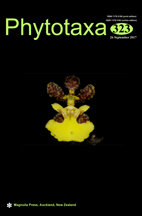Abstract
Three new species of Angraecum sect. Afrangraecum from Central Africa are here described and illustrated. They are morphologically similar to A. affine and A. cribbianum. Two of them, A. gereauanum and A. geerinckianum, are only known from Massif du Chaillu in Gabon and appear to be closely related based on morphological and preliminary molecular evidence. The third species, A. oliveirae, is endemic to São Tomé. A dichotomous key to all fourteen species of A. sect. Afrangraecum and a table with the distinguishing characters of the three new species and closely allied taxa are provided. A preliminary assessment of the conservation status of the new species is also presented, using the IUCN Red List categories and criteria.

